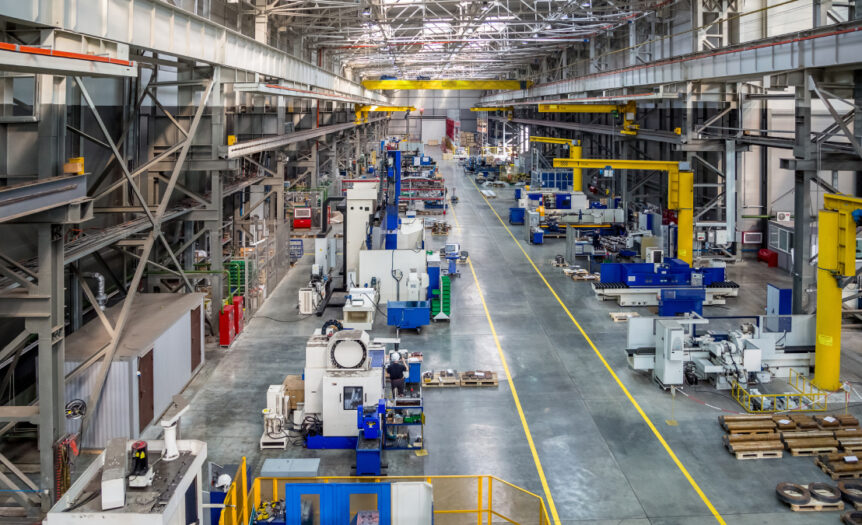Manufacturing is the lifeblood of several crucial industries, relying on precision, speed, and coordination to churn out products. When an interruption occurs, the consequences ripple through the supply chain and affect everything from customer satisfaction to bottom-line profits. But don’t throw in the towel just yet. In this read, we explore the top reasons your manufacturing is slow and how to fix it.
The Downright Drudges of Downtime
Within every manufacturing chain, downtime is the archenemy of productivity. Whether it’s a slow machine or a complete standstill due to maintenance issues, it’s more than just an inconvenience; it’s a tangible loss in operational capability. Imagine a production line idling while orders stack up and resources go untouched—it’s every manufacturer’s nightmare.
Unveiling the Downtime Dilemma
Equipment failures, unexpected maintenance needs, and underutilization plague even the most finely tuned systems. Companies are increasingly turning to predictive maintenance, which uses data and analytics to forecast when equipment may fail and schedule maintenance accordingly. It’s a preemptive strike against the forces of downtime and keeps your operation running like a well-oiled machine.
The Inventory Quandary and Its Hidden Costs
Keeping the right amount of inventory at the right time and place is a delicate balancing act—too little, and you’re scrambling to fill orders; too much and wasting resources. Poor inventory management not only slows down manufacturing but also affects your business’s financial health.
Untangling the Inventory Web
One approach to better inventory management is just-in-time (JIT) manufacturing. This involves ordering and receiving materials on an as-needed basis per production demands. This strategy minimizes excess materials and leads to more streamlined operations and faster production. It’s essential to align with trusted suppliers and implement reliable tracking systems to ensure JIT’s success.
Streamlining for Speed: Making Your Workflow Work for You
Inefficiencies in your workflow can be like tiny speed bumps that collectively slow down the entire production cycle. These could be bottlenecks in production, unnecessary back-and-forth movements, or redundant processes that add no value.
Tips for Speeding Up Your Manufacturing
A tip to speed up your manufacturing process is integrating a technique like value stream mapping, which identifies the flow of products and their value-adding activities, and standard work procedures that ensure consistency and eliminate unnecessary variations. Continuous improvement methodologies can also help your team identify and address these bumps to create a more efficient path from raw material to finished product.
In the fast-paced world of manufacturing, efficiency is not just a nice-to-have—it’s non-negotiable for sustainable success. By addressing the reasons your manufacturing is slow and understanding how to fix it, you can edge out your competition and propel your operation to new heights.










 Deering Estate
Deering Estate
 Massage Envy South Miami
Massage Envy South Miami
 Calla Blow Dry
Calla Blow Dry
 My Derma Clinic
My Derma Clinic
 Sushi Maki
Sushi Maki
 Sports Grill
Sports Grill
 The Healthy Kitchen
The Healthy Kitchen
 Golden Rule Seafood
Golden Rule Seafood
 Malanga Cuban Café
Malanga Cuban Café

 Kathleen Ballard
Kathleen Ballard
 Panter, Panter & Sampedro
Panter, Panter & Sampedro
 Vintage Liquors
Vintage Liquors
 The Dog from Ipanema
The Dog from Ipanema
 Rubinstein Family Chiropractic
Rubinstein Family Chiropractic
 Your Pet’s Best
Your Pet’s Best
 Indigo Republic
Indigo Republic




 ATR Luxury Homes
ATR Luxury Homes


 2112 Design Studio
2112 Design Studio
 Hamilton Fox & Company
Hamilton Fox & Company
 Creative Design Services
Creative Design Services
 Best Pest Professionals
Best Pest Professionals
 HD Tree Services
HD Tree Services
 Trinity Air Conditioning Company
Trinity Air Conditioning Company
 Cisca Construction & Development
Cisca Construction & Development
 Mosquito Joe
Mosquito Joe
 Cutler Bay Solar Solutions
Cutler Bay Solar Solutions


 Miami Royal Ballet & Dance
Miami Royal Ballet & Dance
 Christopher Columbus
Christopher Columbus
 Pineview Preschools
Pineview Preschools
 Westminster
Westminster
 Carrollton
Carrollton
 Lil’ Jungle
Lil’ Jungle
 Frost Science Museum
Frost Science Museum
 Palmer Trinity School
Palmer Trinity School
 South Florida Music
South Florida Music
 Pinecrest Orthodontics
Pinecrest Orthodontics
 Dr. Bob Pediatric Dentist
Dr. Bob Pediatric Dentist
 d.pediatrics
d.pediatrics
 South Miami Women’s Health
South Miami Women’s Health

 The Spot Barbershop
The Spot Barbershop
 My Derma Clinic
My Derma Clinic




 Miami Dance Project
Miami Dance Project

 Rubinstein Family Chiropractic
Rubinstein Family Chiropractic
 Indigo Republic
Indigo Republic

 Safes Universe
Safes Universe
 Vintage Liquors
Vintage Liquors
 Evenings Delight
Evenings Delight





 Atchana’s Homegrown Thai
Atchana’s Homegrown Thai
 Baptist Health South Florida
Baptist Health South Florida

 Laser Eye Center of Miami
Laser Eye Center of Miami
 Visiting Angels
Visiting Angels
 OpusCare of South Florida
OpusCare of South Florida

 Your Pet’s Best
Your Pet’s Best





 HD Tree Services
HD Tree Services
 Hamilton Fox & Company
Hamilton Fox & Company


 Creative Design Services
Creative Design Services